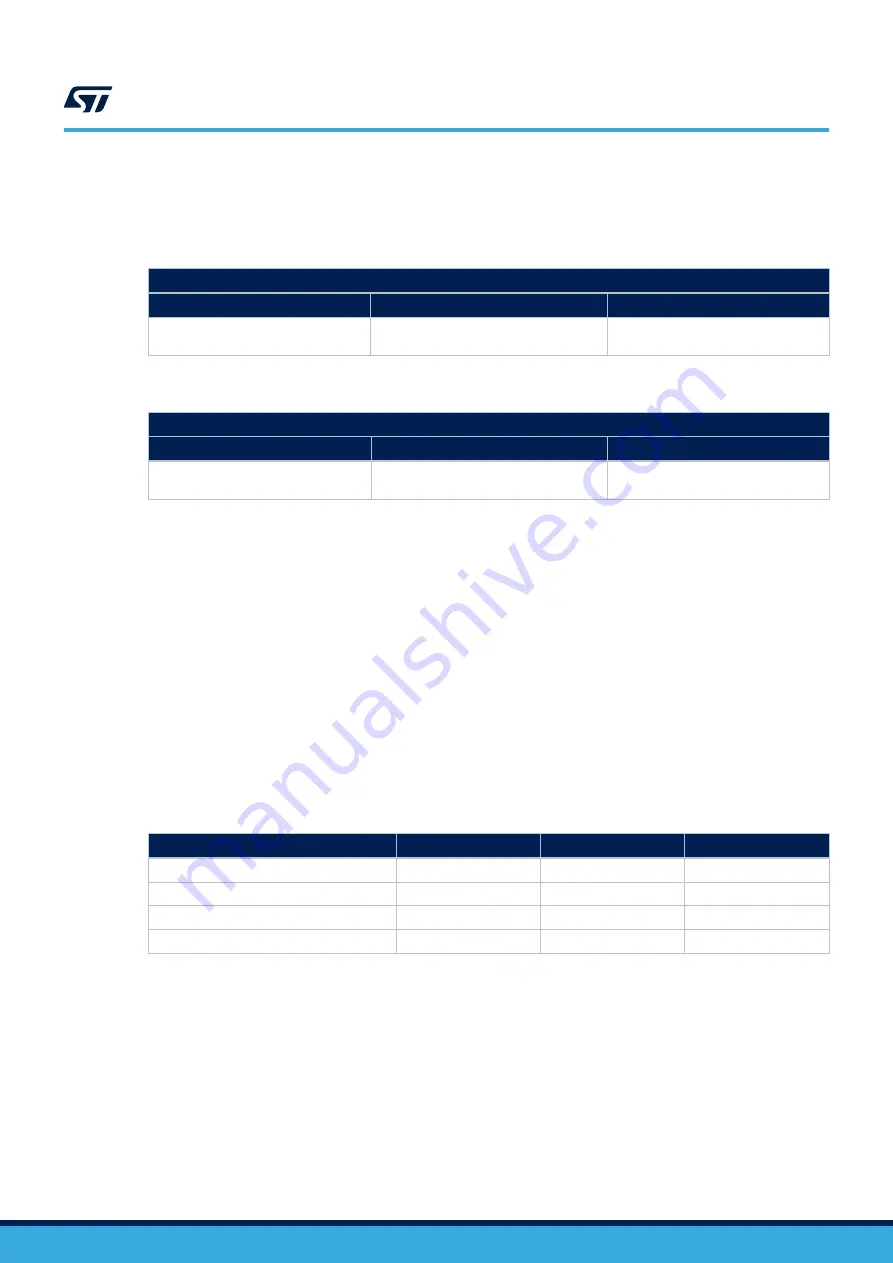
Step 2.
Download the firmware (.bin) onto the
development board microcontroller through
,
and according to your IDE environment as detailed in
the table below.
Table 1.
NUCLEO-F401RE development board supported IDEs - bin files
NUCLEO-F401RE
IAR
Keil
STM32CubeIDE
EWARM-OUT05_06-
STM32F4xx_Nucleo.bin
MDK-ARM-OUT05_06-
STM32F4xx_Nucleo.bin
STM32CubeIDE-OUT05_06-
STM32F4xx_Nucleo.bin
Table 2.
NUCLEO-G431RB development board supported IDEs - bin files
NUCLEO-G431RB
IAR
Keil
STM32CubeIDE
EWARM-OUT05_06-
STM32G4xx_Nucleo.bin
MDK-ARM-OUT05_06-
STM32G4xx_Nucleo.bin
STM32CubeIDE-OUT05_06-
STM32G4xx_Nucleo.bin
Step 3.
device supply voltage via CN1 (see
Step 4.
Provide the digital supply voltage (see
Step 5.
Connect the load on the output connector (see
Step 6.
Reset the example sequence using the black push button.
Step 7.
Push the
blue button to select the example provided in the firmware package.
1.5
Multiple board configuration
It is also possible to evaluate a four channel digital output module by stacking four
with
shared or independent supply rail and independent loads.
In this case, the four expansion boards (board 0, 1, 2, 3 as shown in the table below) must be properly configured:
for board 1, 2 and 3, it is necessary to unsolder three resistors for each board from the default position and solder
them back in the alternate positions according to the following table.
Table 3.
Configuration of a stack of four expansion boards
Board no.
IN1
FLT1
FLT2
Board 0
R101
R103
R114
Board 1
R102
R104
R117
Board 2
R115
R116
R107
Board 3
R120
R119
R118
UM2865
Multiple board configuration
UM2865
-
Rev 1
page 6/18


















